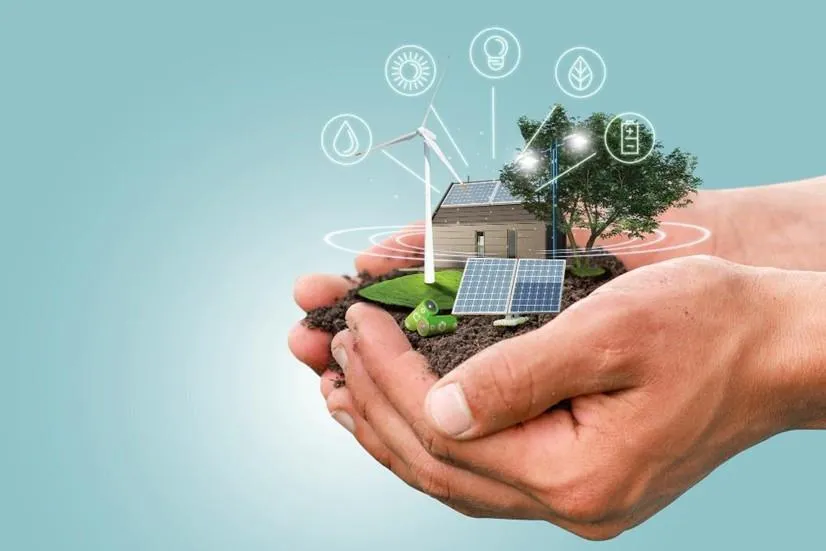
Energy Savings with Solar
Rising electricity prices are prompting more homeowners to rethink how they power their homes. Solar energy has emerged as a smart and sustainable solution, offering long-term financial benefits. Ramselec Solar provides expertly designed systems that help households reduce reliance on the grid and maximise savings. With customised installations, government rebates, and years of expertise, solar energy is no longer just an option; it’s a practical investment in your future.
Table of Contents
Understanding Solar Energy Savings
Understanding Solar Power Savings
2. Long-Term Return on Investment
3. Daily Usage and Feed-In Tariffs
5. Business Savings with Solar
6. Regional Variations in Savings
7. Government Incentives and Rebates
Key Takeaways
Return on investment: Many Aussie triple their investment on the day of install then receive around a conservative 100% + ROI annually.
Increased home value: Solar affirms property appeal and resale value.
Environmental impact: Cleaner energy lowers your carbon footprint.
Government incentives: Rebates and plans like STCs and feed‑in tariffs amplify savings.
Why Opting for Solar
Solar isn’t just about panels on your roof; it’s a smart financial move. Homeowners are increasingly recognising that:
Electricity Prices Keep Climbing: Over the past decade, power costs have risen steadily, averaging about 5% annually. Locking in your energy source protects you from future spikes.
Solar Panels Last for Decades: Modern panels often include 25-year warranties. However Ramselec Solar in Thomas Town offers 30 year warranties. Your initial investment continues to pay you back long after you're past the pay‑off mark.
Buy-Back Credit Adds up: Under feed‑in tariff schemes, excess energy sold back to the grid generates credits that offset your bill even further.
Environment Benefits of Solar Power: Reducing reliance on fossil fuels lowers greenhouse gas emissions, helping to combat climate change while supporting a cleaner, greener future, one of the key environment benefits of solar power.
Understanding Solar Energy Savings
Solar energy systems produce electricity by capturing sunlight using photovoltaic (PV) panels. Once installed, these systems can drastically reduce or even eliminate monthly electricity bills, depending on factors like system size, geographic location, energy usage patterns, and available sunlight.
The savings from solar energy can be broken down into three main areas:
Immediate Monthly Savings
Long-Term Return on Investment (ROI)
Incentives and Tax Credits
Let’s delve into each area to understand the full financial impact.
Understanding Solar Power Savings
Solar power systems generate electricity using sunlight, which is freely available. Once the initial installation is complete, the ongoing cost of producing electricity becomes almost negligible. The true value lies in offsetting the amount of electricity drawn from the grid, which significantly reduces electricity bills.
In a typical residential scenario, a household installing a 6.6kW solar system, currently one of the most common sizes, can expect to generate between 24–30 kWh of electricity per day, depending on their location and weather conditions. Most households consume between 15–25 kWh per day, meaning a properly sized solar system can cover the bulk of this demand.
1. Immediate Monthly Savings
One of the most tangible benefits of solar energy is the reduction in monthly utility bills. When a solar system is installed, the electricity it produces directly offsets the power you would otherwise buy from the grid.
Conservative Example Breakdown:
Average electricity bill without solar: $120/month
Electricity offset by solar system: 80%
New electricity bill: $24/month
Monthly savings: $96
Annual savings: $1,152
In sunny regions, solar panels can often offset nearly 100% of a household’s electricity use, resulting in even greater savings.
2. Long-Term Return on Investment
Solar panels are an investment, and like any investment, the goal is to achieve a return over time. The typical residential solar system costs between $1,000 and $2,000 after federal tax incentives. While this may seem steep, the long-term savings often exceed the upfront cost.
Estimated 25-Year Savings Breakdown:
Average Initial Cost (after incentives): $1500
Average Annual Electricity Savings: $1,200
Total Savings Over 25 Years: $30,000
Net Savings: $28,500
This breakdown doesn’t account for rising electricity rates, typically 5% annually, which can make solar energy even more economically attractive over time. When energy prices rise, your savings increase because you're avoiding higher utility costs.
3. Daily Usage and Feed-In Tariffs
One key factor influencing savings is how much of the solar electricity is used directly. The more solar power you consume during daylight hours, the greater the benefit. This is because using solar power offsets the retail electricity rate, which is generally higher than the rate received from feed-in tariffs (the money paid for exporting excess solar power to the grid).
For example, if the average household pays 30 cents per kWh for electricity and receives 8–10 cents per kWh for exported solar, consuming your solar power is roughly three times more valuable than exporting it. Therefore, shifting energy use, such as running appliances during the day, can significantly increase the value derived from a solar system.
4. Impact of Battery Storage
Adding a battery to a solar setup increases the upfront cost but can further reduce dependence on grid electricity, particularly in the evenings and during peak demand times. Battery systems typically cost around $8,000, but they can store excess solar power generated during the day for use at night.
The financial case for batteries is improving, particularly in regions with higher electricity rates or lower feed-in tariffs. Additionally, households that experience frequent blackouts or want greater energy independence often find that batteries provide both financial and practical benefits.
5. Business Savings with Solar
Small and medium-sized enterprises can also reap substantial benefits from installing solar panels. Businesses that operate primarily during daylight hours, like retail stores, offices, and cafes, can offset a large portion of their electricity use.
A typical 10kW–30kW solar system for a business might cost $6,000–$25,000 after rebates. Annual savings can vary between $3,000 and $12,000, depending on the system’s size and the business’s energy consumption. With an average return on investment of just 2 years, solar represents a compelling opportunity for commercial energy users.
6. Regional Variations in Savings
Savings from solar vary based on several factors, including geography. Northern regions with higher average sunshine hours, such as Queensland and the Northern Territory, tend to produce more electricity, leading to faster payback periods and greater long-term returns. On the other hand, even southern cities like Melbourne and Hobart still receive sufficient solar radiation to make solar systems highly beneficial.
Local energy prices, grid infrastructure, and feed-in tariff rates also play a role. Households in areas with higher electricity costs or lower export rates stand to benefit more from using solar energy directly rather than relying on the grid.
7. Government Incentives and Rebates
Various federal rebates and state-based incentives help make the transition to solar more affordable and accessible. Programs such as interest-free loans, battery rebates, and subsidies for low-income households further enhance affordability and reduce the payback period for solar systems. Keeping informed about these programs ensures households and businesses maximise their return on investment.
8. Incentives and Tax Credits
Beyond reducing electricity bills, multiple federal, state, and local incentives enhance affordability and increase total solar savings.
Federal Investment Tax Credit (ITC):
The most significant incentive is the ITC, which allows homeowners to deduct 30% of the cost of installing a solar energy system from their federal taxes.
Example:
30kw System cost: $20,000
30% federal tax credit: $6,000
Net system cost after ITC: $14,000
State and Local Incentives:
Many states offer additional rebates, property tax exemptions, and performance-based incentives.
Net Metering:
Net metering policies allow solar users to sell excess electricity back to the grid, essentially spinning their meter backward. This not only leads to further bill reductions but can also generate income in certain months when production exceeds usage.
Additional Savings and Value
Beyond direct financial savings, solar energy adds value in several indirect ways:
Increased Home Value: Studies show that homes with solar panels sell for 4–5% more than those without. For a $400,000 home, that’s up to $20,000 in added value.
Reduced Maintenance Costs: Solar panels have no moving parts and require minimal maintenance, often lasting 25–30 years with warranties to match.
Energy Independence: Solar reduces reliance on fluctuating utility rates and provides a measure of energy security, especially when paired with battery storage.
Commercial Solar: Business Savings
The potential savings are even greater when it comes to commercial solar energy system applications. Commercial properties often consume more electricity and can benefit from economies of scale. Additionally, businesses can leverage depreciation tax benefits through the Modified Accelerated Cost Recovery System (MACRS), which allows them to recover the costs of solar systems more quickly.
Commercial Example:
System Cost: $100,000
Federal Tax Credit (30%): $30,000
MACRS Depreciation Benefit: $25,000 (over 5 years)
Estimated Annual Energy Savings: $50,000
Payback Period: 2 years
Lifetime Savings (25 years): $1,200,000 + Asset Value
Is Solar Worth It?
The numbers speak for themselves. Whether you’re a homeowner looking to cut monthly costs or a business owner aiming to boost your bottom line, the switch to solar energy offers substantial financial benefits. With upfront costs continually decreasing, generous tax incentives available, and the long-term savings becoming more compelling, solar energy isn’t just a green choice, it’s a smart one.
If you're considering solar, the best next step is to get a personalised assessment of your property’s solar potential, taking into account your location, energy usage, and available incentives. In most cases, the transition to solar is not only environmentally responsible but also economically rewarding.
Conclusion
Investing in solar energy with Ramselec Solar isn’t just a green choice, it’s a smart smart financially astute decision. You stand to gain major savings, increased home value and environmental impact, all while enjoying reliable power. Ready to start saving? Contact us today to book your no-obligation consultation. Let’s design a solar solution that fits your home and budget.
FAQs:
What are the potential savings from installing solar panels on a residential property?
Typical savings range from $800–$1,300 per year, depending on your electricity usage, system size, and solar feed‑in tariff.
What’s the payback period for a residential solar system?
Most 4 kW systems pay for themselves in around 1 year, factoring in government rebates, energy savings, and feed‑in credits.
Can solar energy raise my home value?
Yes, residential properties with solar installations often command around a 5% higher sale prices.
Is solar reliable during cloudy weather?
Modern panels still generate at low light and, paired with net-metering, they continue producing value, even on overcast days.
What government rebates are available for solar?
You may be eligible for Small scale technology certificates (STCs), feed‑in tariffs and various state-based rebates.
Do I need a battery for solar benefits?
Battery storage isn’t essential, but it helps increase self-consumption and energy autonomy.







